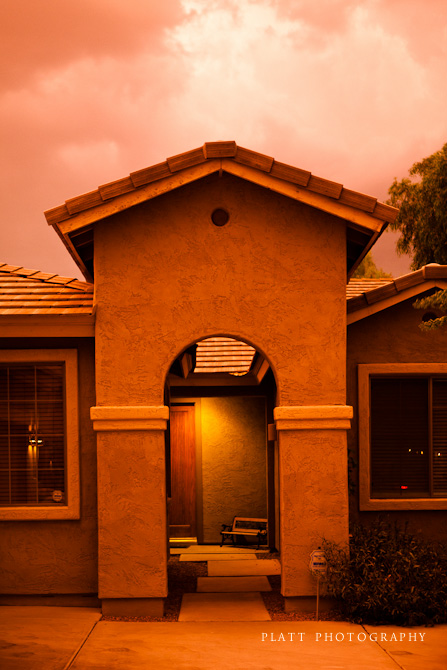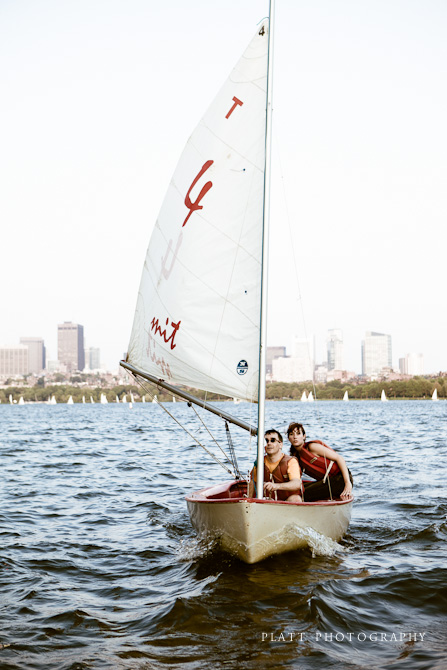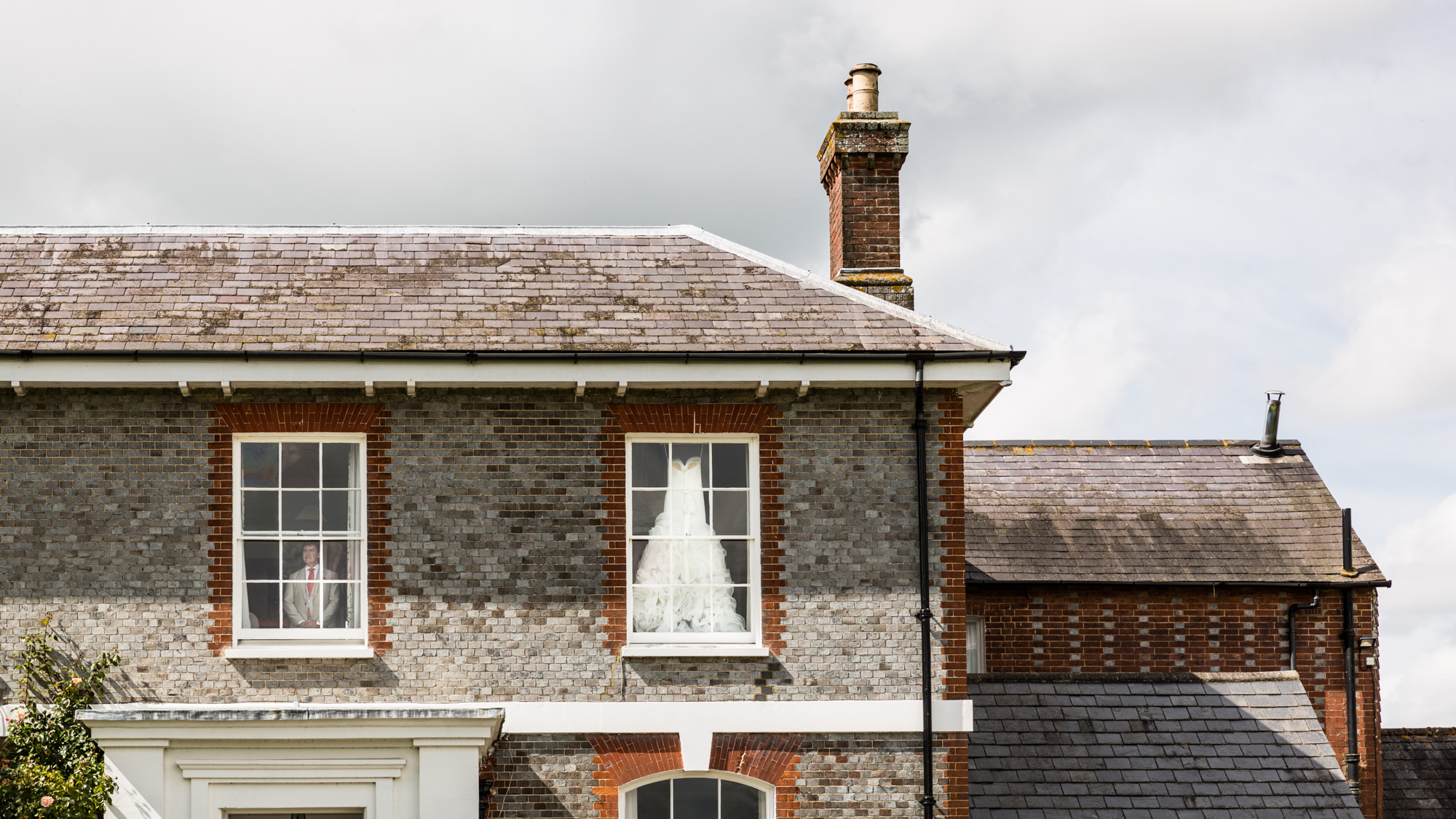I looked out the window the other evening and the whole world had a Tang orange glow. Nothing looked right and as I went outside with my boys to investigate, I walked into another world. The clouds were thick and full of rain, so very little light came through them, but instead spilled over them from the sunset below. The dust was so thick that we were not looking at the sunset, we were in the sunset. It was a magnificent sight. There was, of course no time to go anywhere other than stay right outside my home and watch this spectacle change as the sun dropped to the unseen horizon. And when this kind of thing happens, you stay outside with your camera until the sun goes down completely. I couldn’t have asked for a better evening with my boys, watching such an incredible display of light and clouds.
As I photographed the clouds, I thought of a conversation I had with John Craig from Pittsburgh about photographic composition and the critical nature of the frame. I asked him, “if you could pass on to your daughter, only one thing about photography, only one quick lesson, what would that be?” It is an interesting question and one I think everyone should ask themselves. What would you pass on to the next generation if you had only one concept to pass along? Think about it before you answer. Some will say something like “follow your passion” or some such platitudinous drivel, which has nothing to do with better photography. What I am asking for is serious conceptual advice on making better photographs, compositional strategies and theories that will, if learned and practices, make any image (no matter the content) into a better photograph.
My answer to my own questions is this: I would teach my child how to see and use the frame well. There are so many theories and strategies that go into using the frame of the image, which is a lesson for another time, but there is no question in my mind that it is the most important aspect of photographic composition. Yes, of course there are others, but the frame is where it all starts and ends. It is the great unifier of photography (we all have four edges to our frame). And yet there is nothing that damns so many photographers to second rate status because they do not use the frame well (mostly, they don’t pay attention to it).
So I offer the following as a method for training your eye to use the frame wisely:
Alfred Stieglitz made a series of photographs of clouds, which he called “Equivalence“, in which, he was attempting to photograph object, which in and of themselves held no loaded messages, and simply explored controlling random compositions as pure abstraction. The theory being that without the loaded imagery, one could focus more on communicating the expressions of the inner soul directly to the soul of the viewer. All a bit too artsy for me, but there was still a brilliance in his selection of clouds as a subject.
The experience of photographing clouds is a fantastic lesson in framing which is the cornerstone of composition. The organizational structures of the clouds keep changing, morphing into something new every minute, so that there are an infinite number of frames before your camera, with constantly changing elements. But there are no intellectually loaded symbols to distract the photographer, so the act of including or excluding something is not to avoid a particular statement or to make a point, but rather it is simply to create a stronger composition.
The greatest failure of inexperienced photographers is their inability to emotionally and intellectually distance themselves from the subject matter and watch for composition. But, with clouds, a photographer has the freedom to practice composition by disregarding the content and dealing only with the composition.
So, with such a perfect opportunity, I took a few moments to practice my framing and enjoy the experience of pure compositional shooting. Here is my favorite image.

And when I say, Tang Orange, I mean it. This is perfectly accurate color. What you see here was exactly what we were seeing. We were literally inside the sunset.






They are the best!
I think clouds are great too!
Jared, I have had so much fun reading your blog this morning. I went down several posts, not just this one. Thank you for sharing your insights with us.
I love and miss the light in the AZ sky. I haven’t experienced it anywhere else. You captured it beautifully.